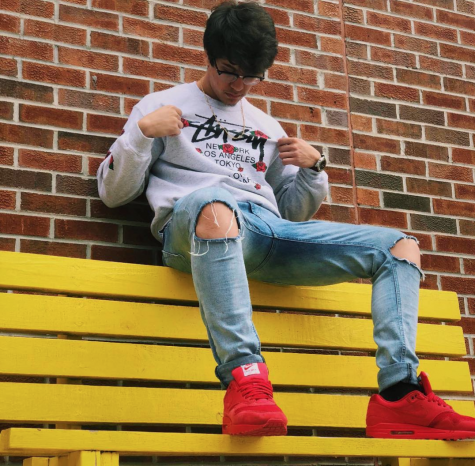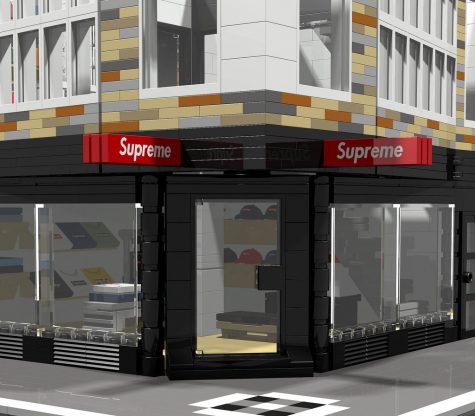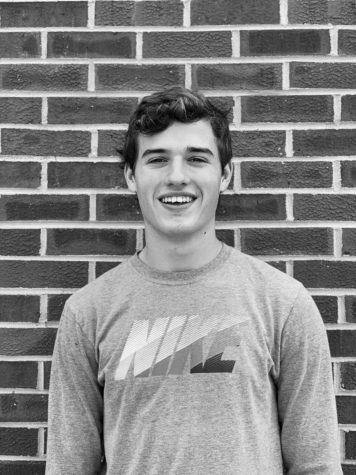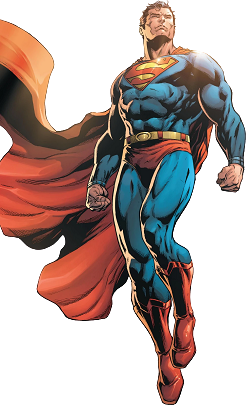Do you believe the hype?
If the term “hypebeast” sounds familiar, you most likely have an idea of what streetwear and clothing trends are in 2018. For those that don’t know, a hypebeast is someone who buys or shows off an item (most commonly a piece of clothing but there are exceptions) to gain respect while possibly not even liking the product they show. But what causes these items to increase their hype? How do people hear about them? Is it merely an exclusive brand competition? All those questions don’t have a strict answer. This was all started in the 90s and 2000s, and down to its core was centered around skateboarding culture. Kids in New York skated sidewalks and handrails while in L.A. pools were drained and made into half pipes. The question was, what were they wearing? In 1985 the original Air Jordan 1 was released and started as a not very successful basketball shoe. Skaters saw this high top, affordable, stylish, and most importantly to them protective footwear and rocked it. As you can guess this caught Nike’s attention very quickly and they created the very first Nike SB (skateboarding) shoe called the Dunk. It was very similar to the Jordan 1, however, it came in both low and high top and had a thicker tongue that added more cushion for skaters. Later on, in the 90s companies like Supreme and Diamond Supply were created, and acted as the thing skaters at the time would praise. Streetwear and fashion have become such an in-depth hobby that it has gone international. Countries like the U.S., Japan, France, and others have their own style and ways of creating, but what makes it complicated it the fact that each bases their work on one another. America had a coast to coast sense of style at this time, with the east coast wearing Air Force 1’s (Nike Basketball/Lifestyle Shoe) and the west wearing Nike runners and Cortez’. Japan saw this and spun it, with bright colors and crazy additions to Nike’s silhouettes. That style then made it’s way back to North America and the cycle from country to country hasn’t stopped since.
Skaters not only needed clothes to wear but also a brand that they could stand behind and as I mentioned before this spawned companies such as Supreme. At the time, it was a skate shop that had some merch. Then the internet was invented and skate culture became a trend rather than a sport. The skate shop that had merch? It is now a fashion store that sells $400 jackets and maybe two or three skateboards.
Many that have been involved in this hobby for a while will say that the internet and exclusiveness ruined their favorite brands. Others will say that it makes wearing the items the companies such as CDG, Babe, Supreme, etc. sell more sought after and more cherished by the consumer. This is where the term “hypebeast” mentioned earlier was created. Are you wearing that $400 hoodie saying you appreciate the story it has and how it looks, or do you want to show off that you just spent that much on screen printed fabric?

he seen showing off his clothing)
The most significant factor that creates the hype for clothes is the internet. A pair of shoes could be dropping in a month and you begin to see articles, adds, celebrities getting them early, but most importantly teen influencers on platforms like Instagram and Youtube. A 9-year-old in L.A. with a wealthy family could make a video about a said pair of shoes, buy eight pairs, and then not only does he show off, but he makes others watching think, “Why don’t I have that? He’s only 9 and is successful”. I realize that example was oddly specific, and I guarantee if you were to look you could find similar hypebeasts online.
I had the chance to talk to Wheeler High School students who consider themselves involved in the game of hyped clothing. “I go with other brands, I go to different areas like I try and get it without a bot (which was explained to me as being a computer-generated purchasing tool that quickly buys items and possibly multiple items at once as soon as they release. He also mentioned that a bot for one purchase costs around $50.) but it usually doesn’t happen. Yeezy’s dropped and they didn’t sell out really quickly so I could have gotten those, I just didn’t have the financials at the moment. I usually stick to Supreme since I have a bot for it and it’s easier. I used to buy a bunch of hoodies since the resale on those are pretty high. I bought four or five hoodies once that each got me a profit of $50-$70. Hoodies usually go for about $148 retail plus shipping which is $10 to $158” (Victor Leao, 12th Grade). These numbers are alarming. Nearly $150 for the retail price, he said he makes a profit that after doing the math he resells these items for around $230, and then when asked what he does with his profit he said he does it all over again and keeps “investing.” These sought-after streetwear companies are allowing people like him to make reselling an income earning profession.

Streetwear has become a fashion statement worldwide, and it’s not slowing down anytime soon. Whether you buy clothes to look good in or just for showing off, your favorite brand may be considered “hyped” one day and both the price and chance of you getting items from the said brand will decrease. Right now the trend is centered around skate and street culture, and personally, I believe this trend will eventually die. That doesn’t mean they hype won’t follow whatever it changes to, and the game of fashion and reselling will live on.

